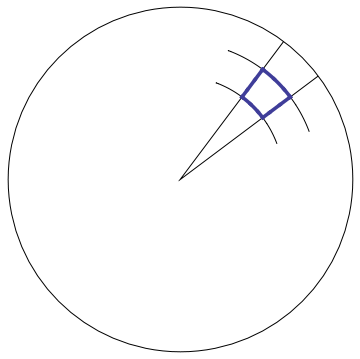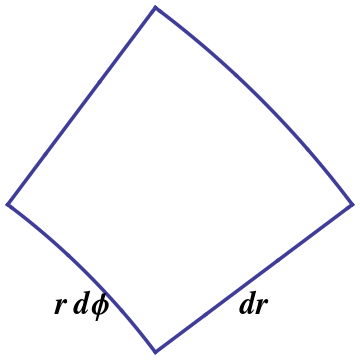Section 5.10 Double Integrals in Polar Coordinates
¶Suppose you want to find the total mass of a round flat plate? How do you chop a round region?


When working with round regions, it usually helps to use round coordinates! In polar coordinates, one chops a region into pie shaped regions using radial lines and circles, as shown in Figure 5.10.1. These lines are orthogonal to each other, so that a small enough piece is nearly rectangular, which means that its area is just its length times its width. As shown in Figure 5.10.2, a little thought shows that a radial side has length \(dr\text{,}\) but a circular side has length \(r\,d\phi\) — not merely \(d\phi\text{,}\) which has the wrong units. Thus, in polar coordinates, 1
Expressing the mass density in terms of polar coordinates, \(\sigma=\sigma(r,\phi)\text{,}\) then yields the total mass in the form
For a round plate, the limits on this integral will be constant. The integral will be especially simple to evaluate if the density function is also round, that is, if \(\sigma=\sigma(r)\) does not depend on \(\phi\text{.}\)
For example, suppose that the density is given by \(\sigma=kr^2\text{,}\) with \(k\) constant. Then the mass of a circular plate of radius \(R\) is